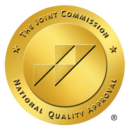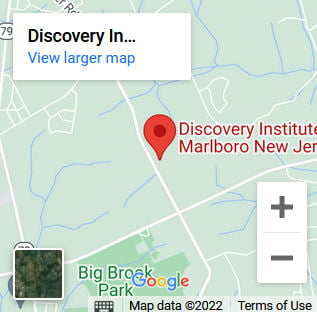Substance use disorders are complex, and the path to recovery isn’t the same for everyone. While many individuals might eventually commit to a path of complete sobriety, others are not ready to take that step right away. For these individuals, harm reduction offers a critical entry point into treatment. Harm reduction is a compassionate approach that aims to reduce the harmful effects of substance use, rather than focusing exclusively on abstinence. However, at some point, it’s important to recognize when a transition from harm reduction to complete recovery treatment is necessary.
This blog will help you understand the role of harm reduction vs. abstinence, and how professional treatment can complement these efforts to lead individuals toward long-term recovery.
Understanding Harm Reduction
Moderation management, also called harm reduction, refers to strategies aimed at minimizing the negative consequences of drug use. Rather than focusing solely on abstinence, harm reduction meets individuals at various stages of addiction, offering practical tools to reduce immediate risks like overdose and disease transmission.
Gaining prominence during the 1980s in response to the HIV/AIDS crisis, harm reduction was seen as essential in reducing harm when traditional abstinence-based strategies fell short. Key principles include

- Nonjudgmental Support: It’s important to meet individuals with empathy without moralizing their substance use. Harm reduction acknowledges that every individual’s journey is different and that support should be adaptable and compassionate.
- Pragmatic Solutions: Harm reduction emphasizes practical strategies to minimize harm instead of requiring complete abstinence. This might mean providing clean needles, distributing naloxone for opioid overdose prevention, or teaching individuals safer ways to use substances.
- Health and Safety Focus: Harm reduction strategies prioritize immediate health and safety. Programs might include overdose prevention, access to clean needles, or even supervised consumption rooms to reduce the risk of harm. At the same time, individuals are not yet ready to stop using substances entirely.
While harm reduction does not eliminate substance use, it plays a crucial role in reducing immediate risks, offering individuals the opportunity to move toward recovery when ready, and eventually transitioning to more structured treatment programs for lasting recovery.
Harm Reduction Techniques in Substance Abuse Treatment
Several harm reduction techniques have been implemented to help people who are actively using substances stay safe while navigating their journey. Some common strategies include:

NEPs reduce the transmission of diseases like HIV and Hepatitis C by offering clean needles in exchange for used ones. These programs often connect users with addiction treatment, healthcare providers, and mental health professionals.
These are controlled spaces where individuals can use drugs under supervision to reduce overdose risks and prevent infections. Research indicates that they help decrease public drug use, as well as reduce overdoses and fatalities.
Medications like methadone and buprenorphine help individuals manage withdrawal symptoms and reduce cravings, stabilizing lives and preventing withdrawal’s dangerous effects.
Naloxone, a medication that reverses opioid overdoses, is distributed to at-risk individuals and their communities. Harm reduction training is critical in teaching people how to administer naloxone effectively, saving lives by providing immediate access to life-saving interventions.
Harm reduction programs offer free condoms and sexual health education to individuals at higher risk of STIs and unplanned pregnancies, addressing sexual health alongside substance use.
These programs connect individuals with shared experiences, fostering a sense of belonging and community. They act as a first step toward recovery, helping people feel understood and less isolated.
While harm reduction techniques minimize immediate risks, residential treatment becomes crucial when individuals are ready to commit to recovery. Inpatient care provides a structured, supportive environment to address the root causes of addiction, ensuring long-term recovery and stability.
What is Abstinence?
The term ‘abstinence’ is not usually encountered by individuals in the context of recovery; nonetheless, for those in treatment, it represents a fundamental principle for achieving a successful life after addiction.
In addiction treatment, abstinence refers to the act of refraining from engaging in or avoiding addictive substances and/or behaviors. When a person completely refrains from the addictive behavior, whether for a prolonged duration or a brief period, they are considered to be abstinent or abstaining.
Returning to substance abuse following addiction treatment is unfortunately prevalent, as Psychology Today reports that 70-90% of those in recovery will experience at least one instance of relapsing into addictive behaviors.
Relapse remains a persistent threat for individuals suffering from substance abuse disorders, and embracing the Abstinence approach is the most effective strategy to prepare for the continuous challenges encountered in sobriety. Although abstinence may appear intimidating to a newcomer in a recovery program who craves ‘one last drink and/or high’, it proves to be remarkably effective when implemented.
Harm Reduction vs Abstinence: Which Approach Is Right for You?
Abstinence-based treatment is often considered the gold standard in addiction recovery. It focuses on total cessation of substance use, with the belief that addiction can be overcome only through complete sobriety. This approach is beneficial for individuals who are ready and committed to quitting their substance use entirely.
On the other hand, harm reduction acknowledges that many individuals may not be ready for abstinence. It allows people to continue using substances but in a safer, less harmful way. The key difference lies in the philosophy behind each approach. While abstinence focuses on total abstinence to manage addiction, harm reduction focuses on minimizing the risks associated with drug use, giving individuals time to move toward recovery at their own pace.

Both approaches have their place in addiction treatment. Harm reduction is often an ideal starting point for individuals who are not yet ready to stop using substances. However, it is not a permanent solution for those who want to achieve long-term sobriety. Eventually, the goal for many individuals is to transition from harm reduction to a more structured, professional treatment planning that addresses the root causes of addiction and supports lasting recovery.
When Is It Time to Seek Professional Treatment at Discovery Institute?
Transitioning from harm reduction to professional treatment is crucial for those seeking long-term recovery. Several signs may indicate that it’s time to make that transition:

If an individual’s substance use is causing significant physical or mental health issues, it may be time to transition to a professional treatment facility. Symptoms such as severe withdrawal, chronic illness, depression, or anxiety are signals that the individual may need more intensive care than harm reduction strategies can provide.
For individuals who have attempted to quit using substances but have been unsuccessful, professional treatment can provide the necessary support. Addiction is often characterized by an inability to stop using substances on one’s own, and rehab centers offer specialized therapies to help break this cycle.
Suppose an individual is ready to commit to long-term sobriety and is motivated to overcome their addiction. In that case, rehab programs provide a structured environment with therapies, counseling, and life skills training to maintain recovery.
If substance use is putting an individual’s safety or the safety of others at risk, seeking professional treatment is essential. In a rehabilitation setting, individuals are supported in creating healthier habits while addressing any safety concerns related to their substance use.
Recovery can be an isolating process, and individuals without a support system may struggle. Professional treatment provides a built-in support network, including therapists, counselors, and peers, who all encourage and support the individual’s recovery.
Addiction often impacts various areas of an individual’s life, including work, relationships, and finances. Professional treatment programs offer comprehensive support to help individuals regain control of their lives and rebuild their futures in a structured, supportive environment.
The Role of Professional Treatment in Lasting Recovery
While harm reduction is critical in the early stages of recovery, professional treatment offers the structured environment needed for lasting change. At Discovery Institute in Marlboro, NJ, we provide services, including inpatient and outpatient care, counseling, group therapy, and support for mental health and addiction issues. Our programs are designed to help individuals address the root causes of their addiction, heal emotionally and physically, and acquire the skills necessary for long-term sobriety.
Harm reduction and professional treatment are not mutually exclusive. When used in combination, they offer a comprehensive approach to recovery. Harm reduction helps stabilize individuals and reduce risks in the short term, while professional treatment addresses deeper issues and equips individuals with the tools and resources needed for sustained recovery.
Debunking the Myths of Harm Reduction
Critics of harm reduction argue that it may discourage people from seeking full recovery. They believe it provides a “free pass” for continued drug use. However, harm reduction doesn’t encourage continued use; instead, it minimizes the risks associated with drug use while preparing individuals for recovery.
Many who begin with harm reduction services transition into full recovery once they feel ready and supported. Harm reduction offers a life-saving service, while professional treatment helps those who are prepared to commit to lasting sobriety.

Benefit From Addiction Treatment at Discovery Institute
If you’re ready to take the next step in your recovery, Discovery Institute in Marlboro, NJ, is here to help. With a comprehensive range of treatment programs, we offer a structured environment to help individuals regain control of their lives. Whether you’ve been utilizing harm reduction techniques or are seeking more intensive treatment, the professionals at Discovery Institute provide the support and guidance needed for long-term recovery.
Remember, harm reduction is an essential first step for those not yet ready for full recovery. When you’re prepared to leap, Discovery Institute offers a safe and effective pathway to lasting sobriety. Contact us now!



